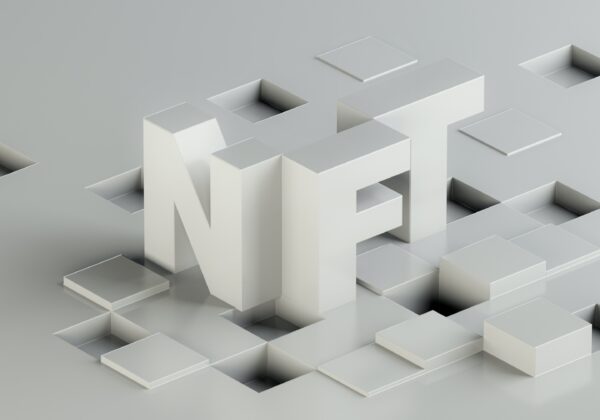An NFT, shorthand for non-fungible token, is a digital certificate of ownership captured by computer code that exists on a decentralized ledger called a blockchain. It is generally displayed as a picture, although it can be a PDF, music file, etc. An NFT verifies ownership and authenticity — like a deed in a buyer/seller transaction — that links to something on-chain or off-chain. The Ethereum blockchain, for example, is programmable in that it permits users to write coded programs and publish them to the Ethereum blockchain, such as smart contracts. A smart contract is a computerized transaction protocol that executes terms of a contract. In essence, a smart contract is a piece of code that executes automatically if triggered by the occurrence of another event.
NFT projects touch on various areas of law such as securities regulations, copyright, and trademarks. The U.S. Securities and Exchange Commission (“SEC”) is responsible for securities enforcement and exchange rules. The SEC may view certain digital assets, including some NFT projects as securities. If SEC deems a digital asset to be a security, then it must comply with SEC disclosure rules and several other regulations, which can be time-consuming and quite costly. Navigating securities regulation is crucial for NFT projects.
Securities law exists to protect the “uniformed” investor and to protect against an unfair, insider information advantages. The leading methodology to analyze whether your crypto project will be subject to securities law is through what is known as the Howey test. SEC v. W.J. Howey is a 1946 case from the U.S. Supreme Court that defined when an asset becomes an investment contract and, therefore, is considered a security. To make that determination, the Supreme Court in Howey introduced a four-part test: there must be: (i) an investment of money; (ii) in a common enterprise; (iii) with an expectation of profits; (iv) solely from the efforts of others (e.g., a promoter or third party). To be considered a security, all four factors must be met.[1]
In further securities analysis, the Crypto Rating Council (CRC) comprised a helpful framework for developing an understanding of how the SEC may consider a crypto project when determining its security status. This 36-question framework asks a series of yes/no questions that apply to any given token project and the questions are weighted by how strongly they affect the outcome of a token’s susceptibility to SEC investigation. A score of 1 on the framework means that a token project shares limited characteristics consistent with a security. The highest score, 5, describes an asset that has many characteristics consistent with a security. Generally speaking—per CRC recommendation—scores below 3 are usually deemed safe to list on an exchange.
An additional frontier that is pertinent to get familiar with as a crypto project builder is Intellectual Property (“IP”): Copyright and Trademark. An NFT is a unique digital certificate of ownership and authentication on the blockchain which is displayed as a file such as a JPEG, PDF, etc.. NFTs, like real estate, are one-of-a-kind and comprise very distinctive value. Their value can stem from several things, ranging from ownership history, rarity, or even some form of utility in society (such as memberships or VIP passes to events). As previously described, NFTs can represent various things like video, audio, documents, transactions, and more. Artwork, images, music, or any other types of original works of authorship fall in the realm of IP.
[1] See Edwards, 540 U.S. at 390.
Copyright law is long-established and there are several laws that prevent people from distributing, copying, transferring or profiting off other people’s original work; NFTs, while a new application of technology, is no exception. Copyright protections are granted to the author of creative works when those works are original and fixed in a tangible medium. Copyright law grants creators of any original creative work(s) a bundle of rights. These protective rights include the right to distribute, reproduce, display, perform, and to create derivative works based on that original work. With some exceptions, copyright rights generally go to the original creator of the work. Therefore, NFT project builders should be careful not to produce a token using a copy of a work created by someone else. A project builder attempting to use another’s original work needs to obtain either a license or authorization from the original creator of that work (or whoever is the copyright holder) to create that NFT. Otherwise, the project builder may get sued for copyright infringement. Buyers of digital tokens need to keep in mind that they are not buying copyright rights along with their NFTs, rather, they are buying a unique digital license to a media file. Buyers can get a better understanding of what exactly they are receiving when they purchase an NFT through the website’s Terms and Conditions. Terms and Conditions will control what kind of license is being granted when the NFT is minted. (Minting is the initial unique publishing of your token on the blockchain to make it purchasable.) Terms and Conditions are the legally binding agreement between the buyer and NFT project which outline the details, rules, responsibilities, and rights of each party. NFT Terms and Conditions are an imperative tool for creators to protect themselves and for buyers to understand their purchase.
If Copyright protects the assets we create, then Trademark can be understood to protect brands, slogans, and logos. A trademark is any “word, name, symbol, or device, or any combination thereof” used to identify a particular manufacturer or seller’s products and distinguish them from the products of another.[2] In Trademark law, the rule of thumb is the person who was first wins. Generally speaking, if a token project builder uses a name for their token that is similar to: another token project name; something in the tech market; something blockchain market; or something that is in a different market but is significantly like the project name, such that its likely to cause “consumer confusion” as to source and origin, then whoever uses it first wins. This means that the pre-existing mark owner has certain rights over subsequent mark users; however, trademark law is highly nuanced and as we are seeing these issues play out in real-time in cases like Yuga labs v. Ryder Ripps, there are exemptions to trademark infringement such as parody. Given the complexities of Trademark law, it is important to seek formal legal advice on these topics because such processes are rigorous, sophisticated, and the repercussions of making an error could be catastrophic to a project builder’s success.
NFT project builders must carefully navigate the vast array of applicable regulations that apply to NFTs. These projects are subject to securities law in how they function as a digital asset, contract law in how the Terms and Conditions apply, and IP laws in how the creator asset and branding is handled. Though the task may seem daunting, applying the Howey prongs, ensuring a low score on the CRC scorecard, drafting thoughtful clauses for the Terms and Conditions, obtaining proper copyright authorization, and immunizing your project from trademark infringement claims are crucial for a successful NFT project.
[2] See 15 U.S.C. § 1127, generally

